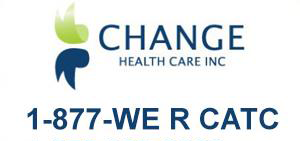Background
Methadone hydrochloride is a synthetic, long-acting µ-opiod receptor agonist, available in Canada for oral use, usually mixed with orange juice. Peak blood levels after oral ingestion occur at 2 to 6 hours. Because of significant protein binding (>90%), levels are constant over 24 hours.
In non-tolerant individuals, there is a biexponential decline in serum concentration with a primary half-life of 14 hours and a secondary half-life of 55 hours.
In tolerant individuals, the half-life ranges from 13 – 47 hours (average 25 hours)
The toxicity of methadone depends on the amount consumed and the tolerance of the individual.
In non-tolerant individuals, 10 mg is enough to kill a child and 50 mg is enough to kill an adult.
The clinical presentation of methadone overdose is that of a gradual onset that is prolonged. There is a triad of respiratory depression, central nervous system depression and pin point pupils. In order to save lives, a high index of suspicion is needed! Do not rely on urine toxicology tests for treatment. If ordering, ask for urine EDDP levels (the metabolite of methadone).
All patients with a significant methadone overdose should be admitted to the hospital for at least 24 hours and watch for the development of CNS or Respiratory depression, Non-cardiogenic pulmonary edema.
If above occurs, intubation is necessary followed by a Naloxone infusion (admission to the ICU is necessary).
In comatose patients with respiratory depression
- Infants and children less than 5 years or less than 20 kg:
- The recommended initial dose is 0.01 mg/kg, followed by 0.1 mg/kg if no response is elicited within 2 minutes.
- Adults and children older than 5 years of age or more than 20 kg:
- The initial dose should be 2.0 mg i.v. If no response is achieved a further 2 to 4 mg of naloxone should be repeated every 2-3 minutes until a total dose of 10 to 20 mg has been given. If no response is elicited, consider other causes of coma
In comatose patients withOUT respiratory depression
- Infants and children less than 5 years or less than 20 kg:
- The initial dose should be lower -0.1 to 0.8 mg I.v. to diagnose opioid overdose.
- Thereafter the dose can be increased as above if no response is elicited.
- Care should be taken not to induce severe acute withdrawal in opioid dependent patients.
- If vascular access is not possible, intralingual, endotracheal, intramuscular, subcutaneous or intranasal routes can be used.
- Absorption from i.m./s.q. sites may be erratic
Infusion Dose
- Follows an adequate bolus to reverse opioid overdose
- Infusion of two-thirds of the bolus dose per hour should keep the patient alert.
- In addition, one-half of the bolus dose should be administered (as a bolus) 15-20 min. after the start of the infusion to prevent a drop in naloxone levels.
Concentration of infusion
- 4 mg (i.e. contents of a 10 ml multi-dose vial of 0.4 mg/ml) in 250 ml D5W or NS to minimize fluid overload
Rate of infusion
- 25-50 ml/hr = 0.4 to 0.8 mg/hr.
Unused solution must be discarded after 24 hours
Titrate infusion to response of patient
- End point of the infusion:
- Adequate spontaneous respiration
- An alert and awake patient
- Dilated pupils and
- Adequate oxygenation
- If the patient is alert, breathing normally and ambulating without supplemental oxygen, it is unlikely that significant hypercapnia is present.
Other issues to Consider
- GASTROINTESTINAL DECONTAMINATION
- Ipecac should be avoided due to the risk of aspiration pneumonia.
- Gastric lavage may be of benefit since methadone delays gastric emptying and some of the ingested drug may be aspirated. However, it is important to protect the airway before this is attempted.
- Activated charcoal should also be given.
Instruction on Discharge
- Risk of recurrence of overdose even without additional drug use.
- They should abstain from alcohol and other drugs if possible.
- They might be especially sensitive to opioids and might experience another overdose if they use their usual amount of drug.
- They should be referred to appropriate treatment programs if they have an underlying addiction.
- If the patient is in a methadone treatment program, the prescribing physician should be informed about the overdose.
- Please notify the patient’s methadone prescriber immediately if the patient has received Naloxone, as this will typically necessitate decreasing a patient’s methadone dose after they are discharged from hospital.

.png)


